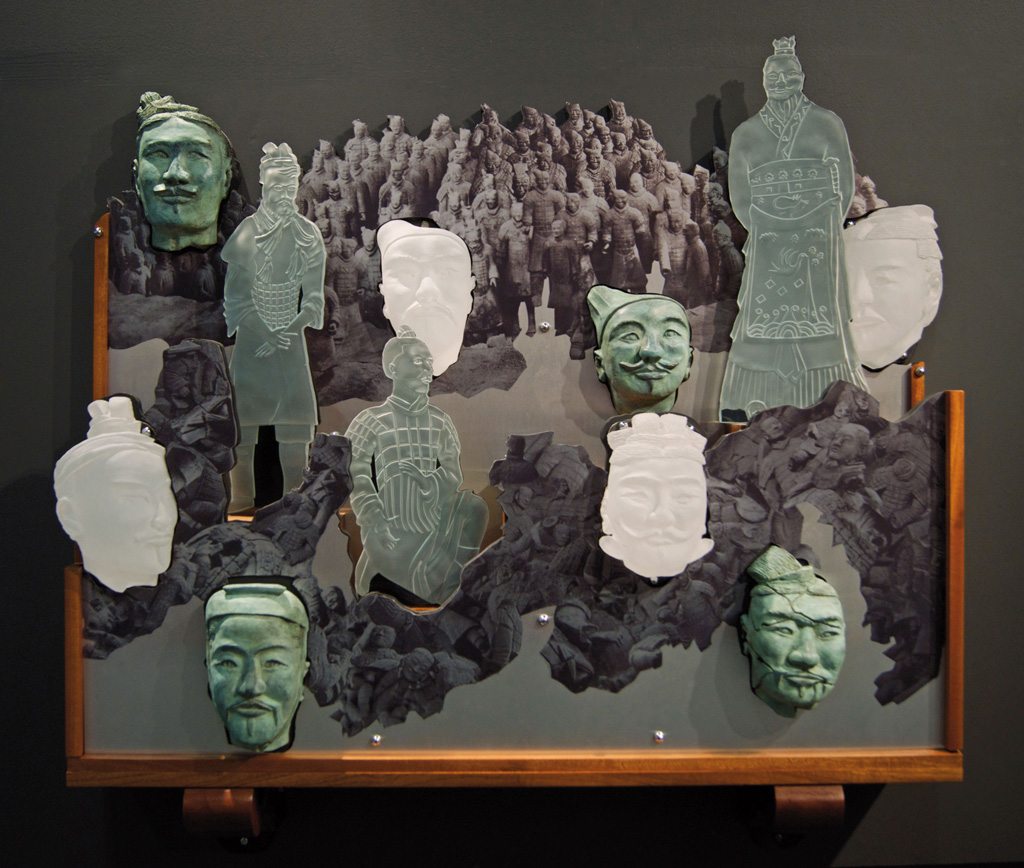Guardians of Emperor Qinshihuang
Materials Cast glass, sandblasted glass, wood, bronze, and photos printed on aluminum
Collection Jack and Leba Cooperstone, Montreal, Canada
In the third century B.C. Qin Shi Huang unified China’s six warring states into an imperial nation and became its first emperor. A form of government that lasted until Puyi became the last emperor in the 20th century. Qin was obsessed with his immortality and after becoming disillusioned with the many mercury-laced elixirs he tried he began building his mausoleum. It is said that over 700,000 workers participated in the construction of the building and the 10,000 terra cotta soldiers, horses, chariots, and other elements of the symbolic guardians of the emperor’s future celestial domain.
In 1974 a group of farmers digging a water-well near Xian turned up the first fragments of what has become one of the most astonishing archeological finds. The life size figures were virtually all in fragments as depicted in the foreground photomontage in my sculpture. Of the 10,000 soldiers it has been discovered that there are only eight basic facial types that were made from molds. The four bronze and the four cast glass heads in the sculpture are each an example of those faces. By adding clay afterwards there are no two that are identical; using hairstyle, helmets, mustaches, and beards to make each face unique. These different facial configurations represent the characteristics of the ethnic tribes that existed in China at that time.
Of the three sandblasted carved glass full figures one is a standing soldier, one a kneeling archer, and the third is an image of Emperor Qin Shi Huang taken from a painting. Finally, in the background is a photomontage of the assembled warriors as they may be seen today.
